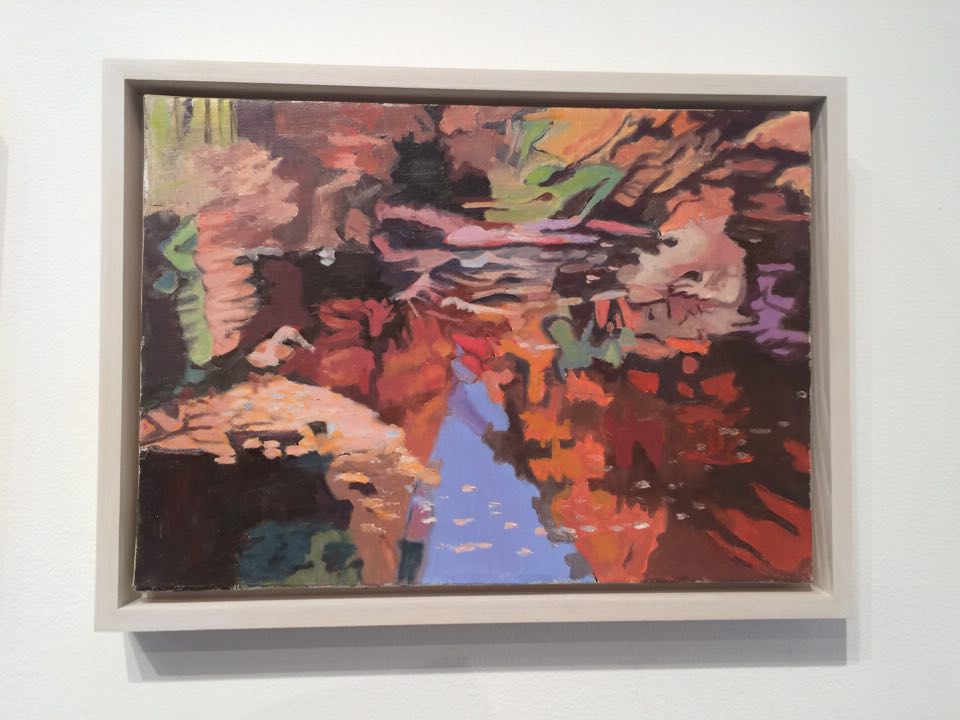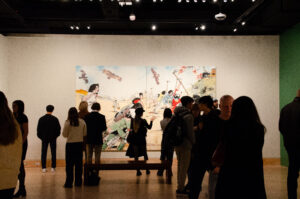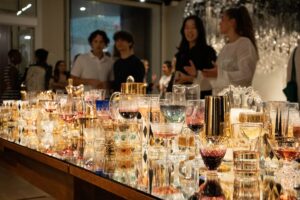The latest exhibition in Georgetown’s Spagnuolo Gallery, “Ralph Wickiser: A Retrospective,” examines the Illinois-native painter’s transition from representational to abstract nature painting. Wickiser’s paintings fit nicely into the Spagnuolo’s modest space; they wrap around the small room chronologically, and his larger pieces fill up the tall walls. After a short walk around the room, visitors will experience multiple artistic transformations: in color, representation, and scope. Overall, the exhibition is creatively constructed, and offers a wonderful chronological look at Wickiser’s whimsical nature scenes.

Erika Bullock
The gallery begins with Wickiser’s early works, which are representational oil paintings of the Vrendenburg Stream, its reflections, and surrounding natural landscape. The first painting is one of the most impressive in the exhibition: a massive oil called The Stream, it covers the leftmost wall of the gallery. It’s subject is depicted in the midst of Fall, with a carpet of orange leaves surrounding the stream. Wickiser’s technique liquefies the landscape and creates a flowing representational work that hints at the artist’s later movement towards the abstract.
The next major work of the exhibition, Pearls and Lace, further shows Wickiser’s move away from direct representation. The piece depicts a reflection in a forest pool, and is punctuated with vibrant green and sky-blue shades that jump out from the painting; it is best described as a swirl of oceanic colors, and the artist achieves an oil-like, reflective quality in the water in the mixing of forest, sky, and beams of light. The pool is stunning: it somehow manages to be photo-realistic and abstract within the same glance. It is clear that reflections were a favorite of Wickiser, as the following pieces are a variety of watery reflections in equally vibrant — if less realistic — colors.
The gallery then moves into Wickiser’s abstract period; reflections and naturescapes are now filled with aggressive yellows, pinks, and oranges, the shapes of trees now angular and jagged. The abstract stands in stark contrast to other oils in the room, and disrupt the flowing, languid nature of the gallery thus far. Yet, their angles are unique and their perspectives welcome in the exhibition; as the viewer has been eased into Wickiser’s abstract world by the progression of his works, the confrontation with these pieces is not as abrupt as it may have been with a different, more segmented exhibit layout. However, these paintings are significantly less inspiring than those prior, because of the simplified forms Wickiser paints.
The curation of Wickiser’s works is excellent. Aside from the chronology of the exhibit, each painting is accompanied by a description written by students from the Museum Interpretation and Education class (AMUS 250). The text attempts to engage with viewers from a non-specialized perspective. These texts are almost an exhibit themselves, as each one is informative and beautifully written in the voice of someone who wants to share their appreciation of Wickiser’s work with others.
The Wickiser retrospective at Spagnuolo is a provocative, whimsical exhibit that masterfully displays the artist’s transition from realism to the abstract. There are two masters at work here: the artist and curator, whose detailed, flowing paintings and accompanying descriptions bring life into the small, white-walled room.
The retrospective will be in the Spagnuolo gallery until April 3rd. For more information on the Spagnuolo, its exhibitions and hours, visit http://art.georgetown.edu/galleries.




